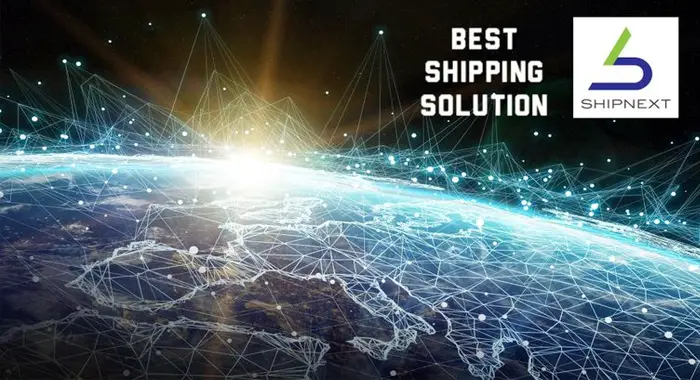
In the ever-evolving landscape of freight management, achieving seamless workflows is crucial for enhancing efficiency, reducing costs, and improving customer satisfaction. The integration of advanced technologies into shipping platforms has revolutionized the industry, providing unprecedented opportunities for optimization. Here, we explore the key features to look for in a shipping platform to ensure seamless workflows in freight management.

A robust supply chain ecosystem is the backbone of efficient freight management. A shipping platform should offer comprehensive integration capabilities, connecting various stakeholders within the supply chain. This includes maritime transport (bulk, breakbulk, and containers), road transport, rail transport, and air transportation. By creating a unified network, the platform can facilitate smooth coordination between different transportation modes and service providers, ensuring timely and cost-effective deliveries.
The future of logistics lies in the adoption of decentralized blockchain solutions. A future logistics ecosystem leverages blockchain technology to create a transparent and reliable system for managing freight. Blockchain enables secure electronic transactions and smart contracts, which automate processes and reduce the risk of fraud. By connecting private supply chains into one cohesive network, blockchain technology enhances the efficiency of door-to-door logistics, making it more reliable and time-efficient.

Advanced data analytics is essential for optimizing freight management. A shipping platform should utilize big data analysis and algorithms to predict demand, optimize routes, and manage capacity. These capabilities enable logistics providers to make data-driven decisions, reducing costs and improving service quality. By analyzing historical data and real-time information, the platform can forecast demand accurately and plan shipments accordingly.
Smart contracts are self-executing contracts with the terms of the agreement directly written into code. They facilitate secure and transparent transactions between parties. In freight management, smart contracts automate processes such as payments, document verification, and customs clearance. This reduces administrative overhead and speeds up the shipping process. A shipping platform equipped with smart contract capabilities ensures that all transactions are executed smoothly and without delays.
Real-time tracking and visibility are critical for managing freight effectively. A shipping platform should provide end-to-end visibility of shipments, allowing stakeholders to monitor the status and location of goods at any point in time. This feature enhances transparency and enables proactive decision-making. By providing accurate and up-to-date information, the platform helps logistics providers address issues promptly and improve customer satisfaction.
Automation is a key feature that enhances the efficiency of freight management. A shipping platform should automate routine tasks such as order processing, documentation, and invoicing. This reduces manual effort and minimizes the risk of errors. Additionally, workflow management tools help streamline operations by providing a structured approach to managing tasks and responsibilities. By automating and managing workflows, the platform ensures that processes are executed consistently and efficiently.
The environmental impact of freight management is a growing concern. A shipping platform should incorporate features that minimize the environmental footprint of logistics operations. This includes optimizing routes to reduce fuel consumption and emissions, as well as increasing the utilization of cargo space to avoid empty runs. By leveraging linear programming and voyage optimization algorithms, the platform can enhance the sustainability of the supply chain and contribute to a greener future.

The SHIPNEXT supply chain model exemplifies the integration of advanced technologies in freight management. It is a demand-driven production and supply chain ecosystem that uses accurate demand-driven supply planning and trade finance. By enabling secure, cost- and time-efficient logistics, SHIPNEXT improves production planning and enhances the overall efficiency of the supply chain. The use of big data analytics and algorithms further optimizes shipping operations, reducing costs and improving service quality.
Implementing a seamless shipping platform requires careful consideration of several factors:
The platform should be scalable and flexible to accommodate the growing needs of the business https://shipnext.com/solution-shipnext-marketplace. As the volume of shipments increases, the platform should be able to handle additional load without compromising performance. Additionally, it should be adaptable to changes in the market and capable of integrating with new technologies and systems.
Security is paramount in freight management. The platform should offer robust security features to protect sensitive data and ensure compliance with industry regulations. This includes encryption, access control, and regular security audits. By prioritizing security, the platform can build trust with stakeholders and safeguard the integrity of transactions.
A user-friendly interface is essential for ensuring that the platform is easy to use and accessible to all stakeholders. The interface should be intuitive and provide a seamless user experience. This includes easy navigation, clear visualizations, and comprehensive support resources. By making the platform user-friendly, logistics providers can maximize its adoption and effectiveness.
The platform should offer comprehensive integration capabilities to connect with existing systems and technologies. This includes integration with ERP systems, warehouse management systems, and other logistics software. By providing seamless integration, the platform can facilitate the flow of information and enhance the efficiency of operations.
In conclusion, achieving seamless workflows in freight management requires a shipping platform that integrates advanced technologies and offers key features such as data analytics, smart contracts, real-time tracking, and automation. By adopting a future logistics ecosystem powered by blockchain and big data, logistics providers can optimize their operations, reduce costs, and improve service quality. As the industry
continues to evolve, investing in a robust and innovative shipping platform will be crucial for staying competitive and meeting the demands of the modern supply chain.
LATEST TECHNOLOGY ARTICLES
LATEST TECHNOLOGY NEWS